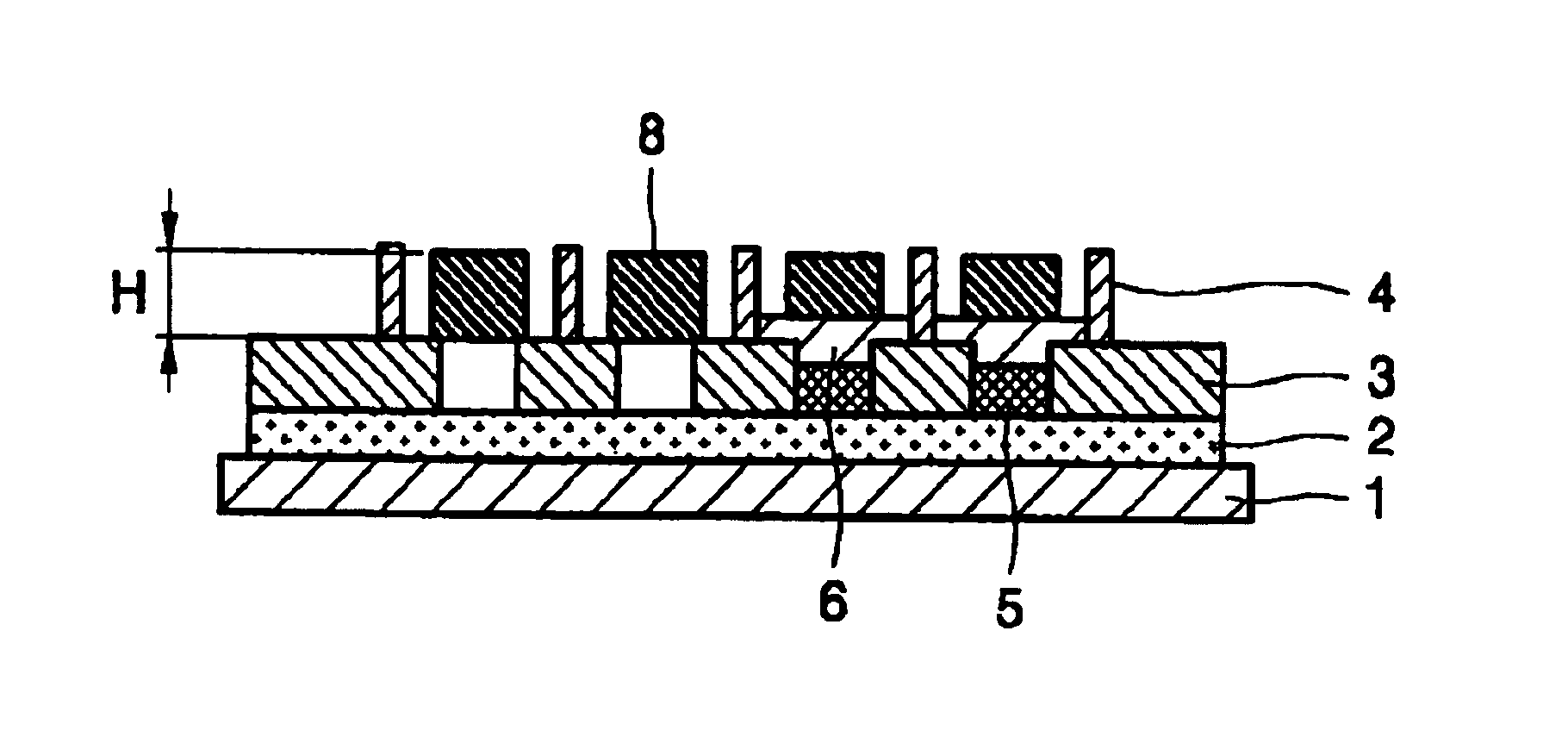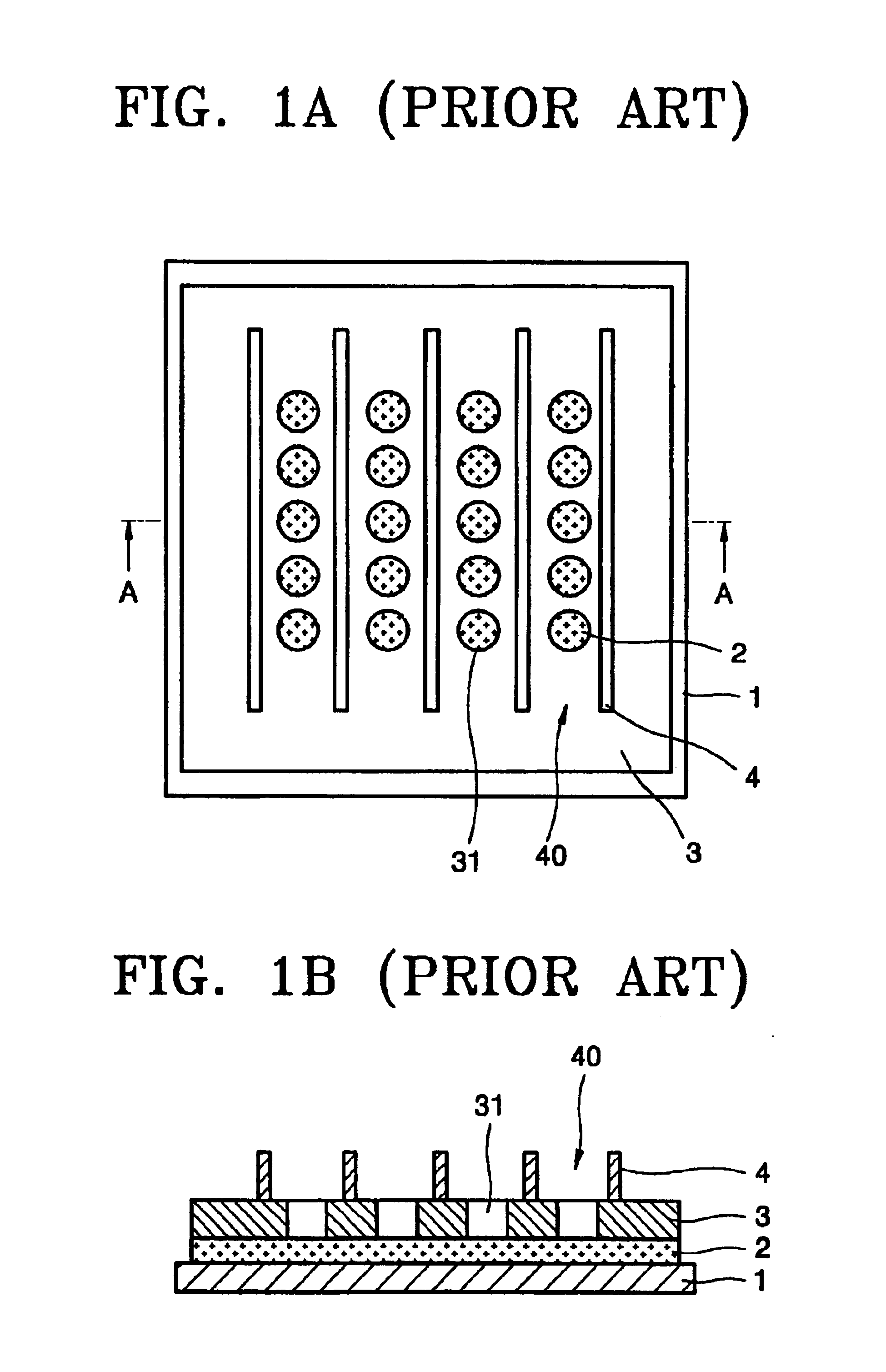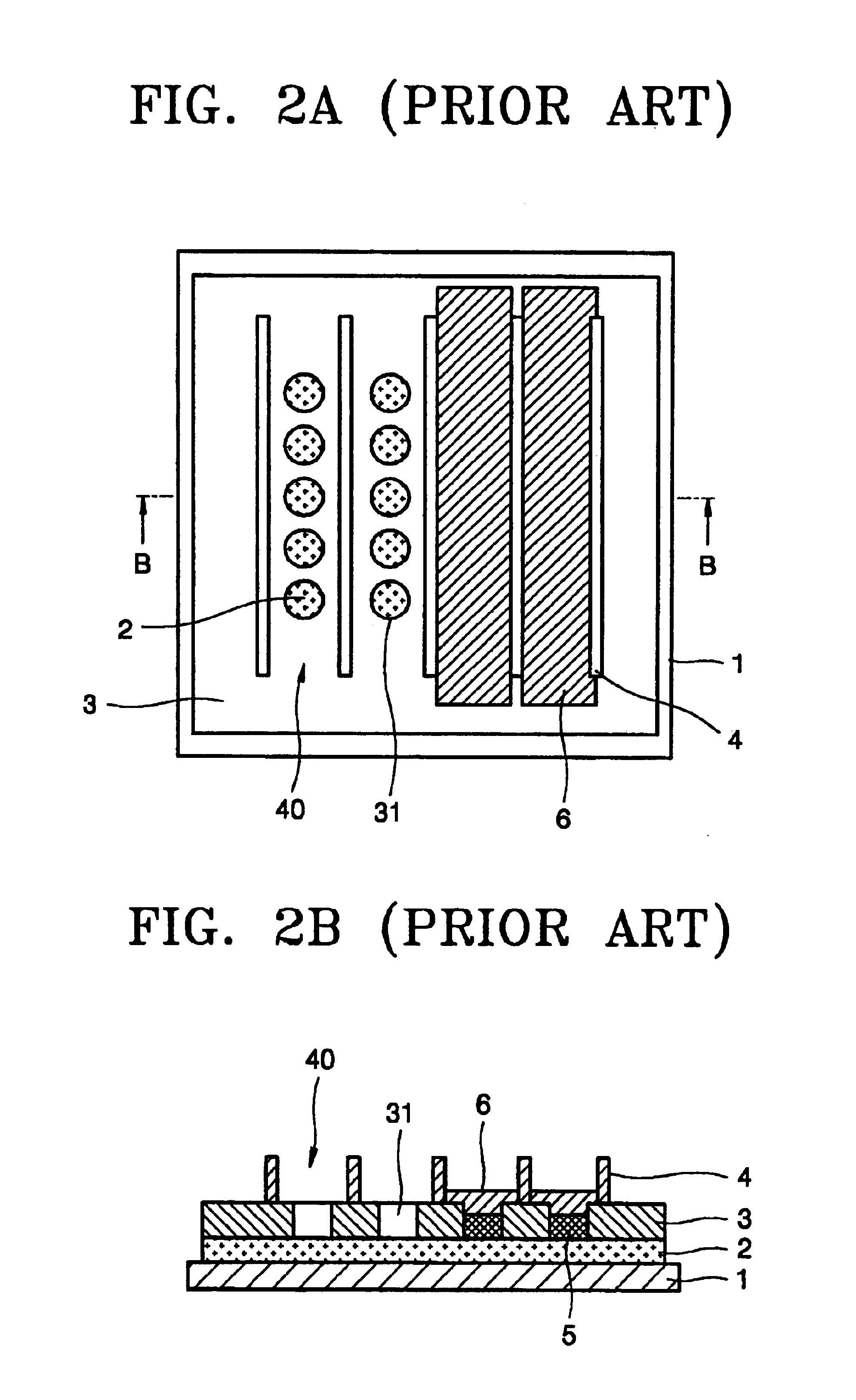Organic light emitting diode and method for producing the same
a light-emitting diode and organic technology, applied in the field of polymer oled, can solve the problem that the photo-resist structure only provides lateral border limitations for the channel, and achieves the effect of reducing the number of lateral borders
- Summary
- Abstract
- Description
- Claims
- Application Information
AI Technical Summary
Benefits of technology
Problems solved by technology
Method used
Image
Examples
Embodiment Construction
[0038]Preferred embodiments of the present invention will now be described in detail with reference to the accompanying drawings. An explanation will be given with the example of a passive matrix type polymer OLED. Although not shown in the drawings, the invention can also be applied to active matrix type polymer OLED.
[0039]FIGS. 3A and 3B show the state in which HTL ink and polymer ink are printed onto a substrate according to one embodiment of the invention.
[0040]The structure of the substrate shown in FIGS. 3A and 3B is substantially the same as that of the conventional substrate shown in FIGS. 1A and 1B. The same elements are denoted by the same reference numerals.
[0041]Referring to FIGS. 3A and 3B, a first electrode layer 2 is formed above a substrate 1 formed of a general glass plate. The first electrode layer 2 may be formed of a transparent conductor material, e.g., ITO. Although not shown, the first electrode layer 2 may be patterned in a predetermined pattern. The distance...
PUM
 Login to View More
Login to View More Abstract
Description
Claims
Application Information
 Login to View More
Login to View More - R&D
- Intellectual Property
- Life Sciences
- Materials
- Tech Scout
- Unparalleled Data Quality
- Higher Quality Content
- 60% Fewer Hallucinations
Browse by: Latest US Patents, China's latest patents, Technical Efficacy Thesaurus, Application Domain, Technology Topic, Popular Technical Reports.
© 2025 PatSnap. All rights reserved.Legal|Privacy policy|Modern Slavery Act Transparency Statement|Sitemap|About US| Contact US: help@patsnap.com



